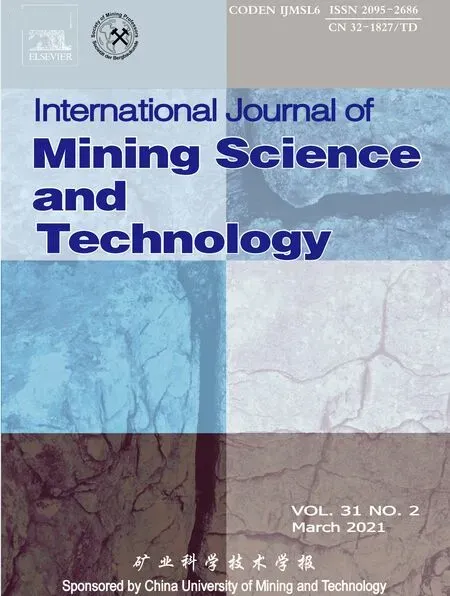Experimental research into the effect of gas pressure,particle size and nozzle area on initial gas-release energy during gas desorption
2021-04-08WeitaoHouHanpengWangLiangYuanWeiWangYangXueZhengweiMa
Weitao Hou,Hanpeng Wang,*,Liang Yuan,Wei Wang,Yang Xue,Zhengwei Ma
a Geotechnical and Structural Engineering Research Center,Shandong University,Jinan 250061,China
b School of Qilu Transportation,Shandong University,Jinan 250061,China
c School of Mining and Safety Engineering,Anhui University of Science and Technology,Huainan 232001,China;
Keywords:Coal and gas outburst Initial expansion energy of released gas Gas pressure Particle size Nozzle area
ABSTRACT Coal and gas outburst is a violent disaster driven by released energy from gas desorption.The initial expansion energy of released gas(IEERG)is a new method to predict coal and gas outburst.In this paper,an instrument for IEERG measurement was developed.Compared with previous setups,the new one which is equipped with three convergent nozzles and quick-release mechanism gets improved in data acquisition and gas sealing and releasing performance.To comprehensively know the effect of gas pressure,particle size,and nozzle area on IEERG,a series of experiments were carried out with this new setup.The variable control test results indicated that the gas pressure-IEERG curves remain the linear trend and the particle size-IEERG curves maintain the negative exponential trend for nozzle areas at 1.13,2.26,and 3.39 mm2,respectively.The increase in nozzle area leads to deceases in value of IEERG and absolute value of slope of fitting curves in each test.In addition,the orthogonal experiment showed that the influence of gas pressure,nozzle area,and particle size on IEERG decreases in turn.Only gas pressure had a marked impact on IEERG.This work offers great importance in improving the accuracy of prediction of coal and gas outburst.
1.Introduction
Coal and gas outburst is a common dynamic disaster in coal mines,where gas flow carries a large amount of coal and rock from coal face,causing serious casualties and economic loss.Coal and gas outburst has occurred in most major coal-producing countries in the world,especially in China[1,2].In order to achieve outburst prediction,a number of scholars and engineers have proposed many static indicators such as Protodyakonov’s coefficient,initial velocity of borehole gas emission,and various dynamic monitoring methods to characterize outburst risk [3-6].The outburst phenomenon usually lasts for only a few seconds to tens of seconds.However,it is difficult for these conventional indicators to depict the gas flow characteristics and energy releasing laws of desorbed gas in such a short time.Therefore,some scholars proposed the initial expansion energy of released gas (IEERG) and this index has been apprehensively applied for prediction of coal and gas outburst in coal mines in China [7-9].During coal and gas outburst,not all of the emitted gas contributes to the destruction,ejection,and migration of coal.After the coal is pulverized by in-situ stress,only the energy derived from desorbed gas expansion under highpressure gradient is the main resource to promote occurrence and development of outburst,and this energy is recognized as IEERG.
The IEERG is an energy without direction and it is affected by insitu stress,gas pressure,and coal’s physical and mechanical properties.Understanding its change trend is a prerequisite for accurate prediction of coal and gas outburst.If the relationship between IEERG and gas pressure for a particular coal seam is obtained,the IEERG index can be easily estimated,thereby directly revealing the outburst risk.A gas pressure value for pre-discharge which meets the demand for safety mining can also be calculated through this relationship.In addition,coal and gas outburst areas are mostly located in geological structural belts,which are characterized by high rock stress [10,11].Coal in these areas is usually broken.As a parameter of coal integrity,particle size distribution can represent the damage effect of different stress levels to some extent.Therefore,it is a practical way to study the influence of stress on IEERG through a wide range of particle size distribution.
As the gas desorption provides the main energy for coal and gas outburst[7,8],prior studies have largely focused on the gas adsorption and desorption characteristics of coal related to IEERG.Relevant experiment results have concluded the linear relationship between gas pressure and IEERG,where methane was used for coal adsorbing.The higher gas pressure,the greater IEERG[12-14].For coal mass with a high moisture content,it usually has a low IEERG[15,16].Additionally,tectonically-deformed coal is formed with low strength,great adsorption capacity,and fast desorption rate compared with primary-undeformed coal [17,18].It has been proved that IEERG of the former is several times than that of the latter,and a negative exponential trend exits between particle size and IEERG using the tectonically-deformed coal with different particle size distribution [19,20].
In the IEERG measuring instrument,convergent nozzle is a key component to control gas outflow.Scholars have proposed different methods to improve the accuracy of flow parameters [21,22],however,there is no standard of nozzle recommended for IEERG measurement.When the size of nozzle changes,it will affect the release law of gas,thus causing IEERG difference.In this scenario,to what extent studies on IEERG index relate to nozzle crosssectional area remains poorly understood.Besides the influence derived from equipment,IEERG is affected by gas pressure and fragmentation degree of coal with different mechanisms.How to determine and compare their impact degrees is a key question for outburst forecast,but there were few clues toward this.Due to a lack of understanding of main influencing factors of IEERG,improvement of accurate prediction and development of antiburst measures are largely restricted.
The aim of this paper is to study the effect of gas pressure,particle size,and nozzle area on IEERG.A new experimental instrument equipped with three convergent nozzles was used in the tests.The influence rules of gas pressure and particle size on IEERG under different nozzle areas were firstly investigated through variable control tests.Then,the orthogonal experiment was conducted to discuss and compare the influence degrees of three factors above.The understanding gained helps comprehend the characteristics of IEERG,and provides insights into the risk assessment and prevention of coal and gas outburst.
2.Material and methods
2.1.Test principle
The diagram of previous experimental setup is shown in Fig.1[8,14].In the test cell,coal is heated and it has reached the adsorption equilibrium state after gas filling.The convergent nozzle with a larger contraction ratio is used as the pneumatic component.After opening the ball valve,high-pressure gas flow through the convergent nozzle,where the inner is a one-dimensional compressible unsteady flow field[12,22].When the velocity of gas flow reaches to sonic velocity,it is called critical state and the critical pressure is [7,9]

Fig.1.Previous measuring equipment of IEERG.

where p’ is the critical pressure in Pa;p2the atmospheric pressure in Pa;and γ the adiabatic index of gas.
According to the pressure and temperature data in test cell,the rate of gas flow is calculated by [9,22]

where qmis the gas mass flow in kg/s;v the gas rate in m/s;s the effective area of convergent nozzle in m2;R the gas constant in J·kg-1·K-1;p1the absolute gas pressure in test cell in Pa;and T the gas temperature in test cell in K.
When the cross-sectional area of nozzle changes,the effective area of nozzle changes as well.Depending on the constant volume method,the effective area of nozzle can be calculated [23].

where piis the absolute pressure in test cell before gas release in Pa;p∞the absolute pressure after gas release in Pa;t the gas release time in s;and V the volume of test cell in m3.
The gas expansion energy at initial stage(0-10 s)follows Eq.(4)[8,9,12].

where We(coal)is the gas expansion energy of coal in mJ.
In Eq.(4),We(coal)includes the expansion energy of both desorbing gas from coal and free gas inside the cell.Therefore,coal sample is replaced with quartz sand in equal volume,which has no absorptivity to gas.After repeating the same process above,the gas expansion energy of quartz sand is obtained which equals to that of free gas tested with coal sample.The IEERG of coal sample is

where Wpis the IEERG in mJ/g;We(sand)the gas expansion energy of quartz sand in mJ;and m the mass of coal sample in g.
2.2.Experimental setup
The new experimental instrument is built with data acquisition unit,test unit,and gas filling unit.The schematic diagram of instrument is given in Fig.2.The data acquisition unit is used for highspeed acquisition and storage of gas pressure and temperature data.The test unit includes a sample container,a reference container,a quick-release device,etc.,providing the test space.The gas filling unit includes a pressure reducing valve,a vacuum pump,and gas cylinder which is used for vacuuming and gas injection.
Compared with previous test instrument,the new one has been improved in the performance of data acquisition and sealing capacity.The details are as follows.

Fig.2.Schematic diagram of new experimental apparatus:1 -data acquisition device;2 -quick-release mechanism;3 -convergent nozzle;4 -gas pressure sensor;5 -sample container;6-absorbent cotton;7-coal sample;8-self-sealed temperature sensor;9-water bath heater;10-manual valve;11-reference container;12-pressurereducing valve;13 -gas cylinder;and 14 -vacuum pump.
(1) The layout of instrument is optimized.The high-pressure sensor and low-pressure sensor which used in previous instruments are replaced with a single high-precision pressure sensor.The sealing performance of solenoid valve between high-pressure sensor and low-pressure sensor easily degrades after long-term use,resulting in a large measurement error.The range of single pressure sensor is from -0.1 to 2.0 MPa (relative pressure) and its resolution is 0.1 %F.S.Because the duration of pressure declining from 2 to 0 kPa in sample container is much less than the entire test time and IEERG less than 2 kPa just accounts for no more than 0.1% of total.In this case,this data acquisition method meets the demand of experimental precision.
(2) A self-sealed temperature sensor(Fig.3)is added at the bottom of sample container.The diameter of K-type thermocouple in temperature sensor is 0.3 mm,which is packed in the probe with diameter of 0.5 mm and length of 30 mm.The probe inserts into coal particles during test.Its response time is less than 1 ms and its resolution is 0.01 °C.
(3) Instead of the ball valve which was usually used to seal convergent nozzle,a quick-release mechanism (Fig.4) is installed.This mechanism is fixed on the nozzle by threaded connection,and its rubber piston seals the end of nozzle channel,which has better long-term sealing capacity.It can completely open within 1 ms,causing less hindrance during gas rapidly releasing.
(4) The convergent nozzle (Fig.5) is designed in a detachable form connected with sample container.Nozzles with different sectional areas (1.13,2.26,and 3.39 mm2) are equipped to simulate gas outburst phenomenon with different time ranges (from 0.4 to 2.2 s).
2.3.Test sample
The coal samples used in experiments were acquired from Wangfenggang coal mine in Huainan,Anhui,China.The coal seam is about 925.6 m below the sea level.Its average thickness is about 5.86 m,and inclination angle is from 18°to 20°.The coal type is fat coal.In January 2006,a serious coal and gas outburst occurred in the main shaft after uncovering the coal seam.Samples were taken to the laboratory for adsorption test,industrial and petrographic analysis,and pore distribution test.The results of adsorption constants and proximate analysis are shown in Table 1.The pore structure parameters are listed in Table 2.The sand is made of highpurity quartz sand with silica content of 99.997%.Its density is 2.65 g/cm3and particle size is from 0.5 to 1 mush number.The amount of sand is determined by the coal matrix volume and the density of quartz sand [12].
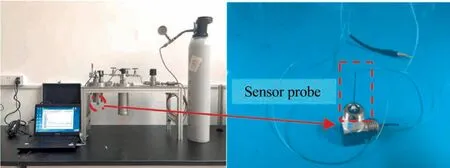
Fig.3.Self-sealed temperature sensor.
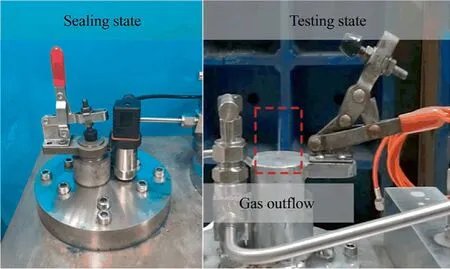
Fig.4.Quick-release mechanism.

Fig.5.Convergent nozzles with different cross-sectional areas.
To prevent impurities from affecting the results,coal samples were cleaned before and after the crushing and screening procedure.The sand was thoroughly cleaned with water.All samples were placed in a drying cabinet at 40 °C for 48 h to remove its moisture and then sealed for storage.
2.4.Test procedure
The whole test included variable control tests and orthogonal experiment.Three nozzles were used in the variable control tests and their cross-sectional areas were 1.13,2.26,and 3.39 mm2,respectively.The effect of gas pressure on IEERG was first investigated with gas filling pressure at 0.50,0.75,1.00,1.25,and 1.50 MPa and a fixed particle size of coal sample at 0.60-1.25 mm.Then,the test to study effect of particle size on IEERG was conducted with sample size of 0.15-0.60,0.60-1.25,1.25-3.00,3.00-5.00,and 5.00-10.00 mm and a fixed gas pressure at 1.0 MPa.

Table 1 Adsorption parameters and proximate analysis results of coal samples.
Notes:f is the Protodyakonov’s coefficient;a and b the Langmuir constants;Δp the initial velocity of diffusion of coal gas;Madthe moisture content;Aadthe ash content;Vadthe volatile content;FCadthe fixed carbon content;Vcthe vitrinite content;E the exinite content;I the inertinite content;and R0maxthe maximum reflectance of vitrinite.

Table 2 Pore structure parameters of coal samples.
For the sensitivity analysis of IEERG,three factors including nozzle area (A),gas filling pressure (B),and particle size (C) were discussed.If conducting a complete comparison with these factors,the workload is too heavy and the period is too long.Therefore,the orthogonal experimental method was applied which has advantages of accurate results and less test numbers[24].The orthogonal table with three factors,three levels(L9(34))was designed without considering the factor interaction.The one empty column was set to determine the random error in experiment.The test factors and levels are shown in Table 3,and orthogonal table is given in Table 4.
The measurement process of IEERG contained the following five steps.
(1) A certain mass of coal sample(e.g.200 g)was placed in sample container and heated (e.g.30 °C) by water bath.To prevent coal particle from flowing out,absorbent cotton was put above sample.After fixing the quick-releasing device,sample container and reference container were vacuumed for 10 h.
(2) The needle valve between sample container and reference one was closed.After certain pressure gas was injected into reference container,the valve opened and coal sample absorbed for 24 h.
(3) The needle valve between two containers was closed again.The data acquisition unit turned on and quick-release mechanism opened manually.During the gas rapidly releasing,data including pressure and temperature in container were monitored and saved by computer.

Table 3 Factors and levels.
(4) Coal sample was replaced with quartz sand in equal volume.The above operations were repeated to record the change of data under the same experimental conditions.
(5) According to the calculation method,IEERG of coal sample was obtained.Experimental conditions changed as required until all tests ended.
3.Results and discussion
3.1.Variable control tests
3.1.1.Effect of gas pressure on IEERG
The pressure and temperature data obtained in the test are shown in Fig.6.It can be seen that pressures drop dramatically in sample containers and then level off when both coal and quartz sand are tested as sample.The drop rates gradually slow during gas release.The pressure curves of coal are always higher than those of quartz sand.The reason is that coal can adsorb and desorb methane whereas sand has no absorptivity to gas.During gas rapidly releasing,a number of gas desorbs from coal and reduces the drop rate of pressure inside container.Consequently,pressure curves of coal always have lower drop rates compared with curves of sand.As the gas pressure drops in sample container,the temperatures in sample containers decrease as well,however,showing hysteresis.The temperature reductions of sand are always smaller than those of coal samples.Besides the reduction caused by highpressure gas releasing,the process for gas desorption also involves heat exchange.This induces the extra temperature drop when coal samples are tested.
According to Eqs.(1)-(5),the IEERG of coal samples is calculated and the fitting curves between gas pressure and IEERG are displayed in Fig.7.It can be seen that the IEERG increases linearlywith the rise of gas pressure.For each nozzle,the correlation coefficient of fitting curve is more than or equal to 0.995,verifying the linear relationship between IEERG and gas pressure.

Table 4 Orthogonal experiment program.
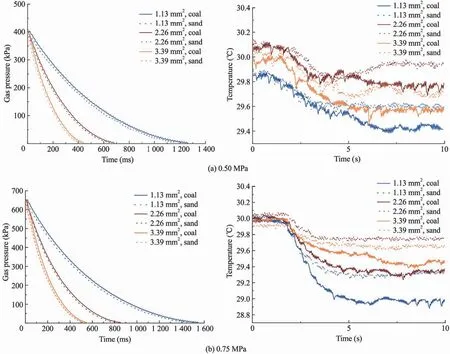
Fig.6.Pressure and temperature data of samples in different gas filling pressure under three nozzles.
The effect of gas pressure on IEERG may include two aspects:(1)adsorption and desorption capacity of coal,and (2) degradation effect on coal mechanical properties.The amount of adsorbed gas and gas pressure follow the Langmuir isothermal adsorption equation.

where p is the adsorption equilibrium pressure in MPa;Q the adsorption capacity in mL/g;and a and b the Langmuir constants.According to the corresponding Langmuir isotherm adsorption curve,there is an increase in the adsorption amount of gas when the gas pressure rises.Thence,the amount of gas from coal increases during desorption process.More gas energy is provided for outburst,leading to a higher IEERG index.The adsorption capacity and gas pressure show a nonlinear relationship,and the IEERG increases proportionally with gas pressure.It can be inferred that there is a nonlinear relationship between adsorption capacity and IEERG.When measures are taken to enhance the adsorption capacity of coal samples,the IEERG increases correspondingly,indicating a high risk of outburst.
The rise of gas pressure not only promotes the adsorption amount of gas in coal,but also leads to more damage in coal.The adsorption-induced damage changes coal micro-structure and results in mechanical deterioration [25-27].Parameters like strength and elastic modulus reduce more with the increase in adsorption pressure.The rapid desorption of gas through instantaneous exposure contributes to the generation of fractures on the surface or inside coal mass [1,28,29].During the rapid gas decompression and desorption,there is a pressure gradient in coal.Numerous previous cracks in coal develop and connect,and coal finally smash to pieces.This damage increases the surface area of coal particles and thus decreases the diffusion resistance for desorption gas on the way out of coal mass.With the increasing of gas pressure,a higher pressure-gradient is set during gas releasing and more serious damage is imposed.More gas is emitted from micro-pore surfaces within coal mass to promote the value of IEERG.
3.1.2.Effect of coal particle size on IEERG
Fig.8 shows the pressure and temperature change collected during test.The pressure declines from equilibrium gas pressure to near atmospheric pressure within 2 s.No matter what the particle size is,pressure curves of coal are always above those of sand.For the same nozzle,there is little difference in the pressure drop rate.Additionally,during the gas releasing,temperature in sample container gradually decreases and then levels off within 10 s.The temperatures of coal sample after gas releasing are always lower than those of sand.The index differences once again verify that gas desorption in coal is an endothermic process.
The IEERG of coal samples in different particle sizes are shown in Fig.9.Eq.(7) was used for data fitting.

where m,n,and k are the relative coefficients;and d the average particle size of coal.
From Fig.9,it can be seen that the particle size of coal and IEERG show a negative exponential relationship under three nozzles.The IEERG index decreases with an increase of average particle size for each nozzle,and the decline rate slows and remains stable when the average size exceeds 2.125 mm.The data is consistent with results obtained by Xu and Jiang [20],that is,IEERG decreases as the particle size increases and particle size above a critical index has little effect on IEERG.
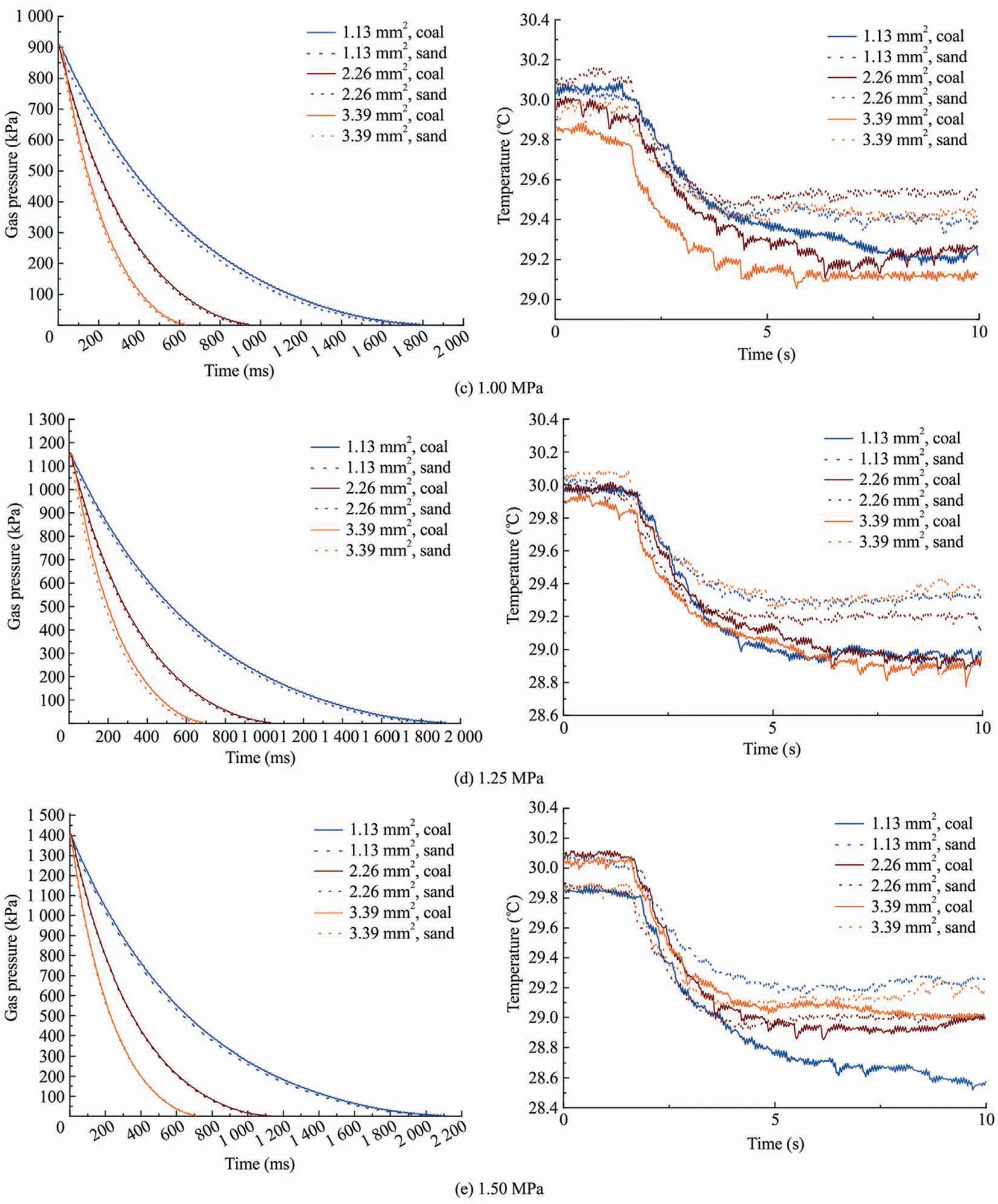
Fig.6(continued)
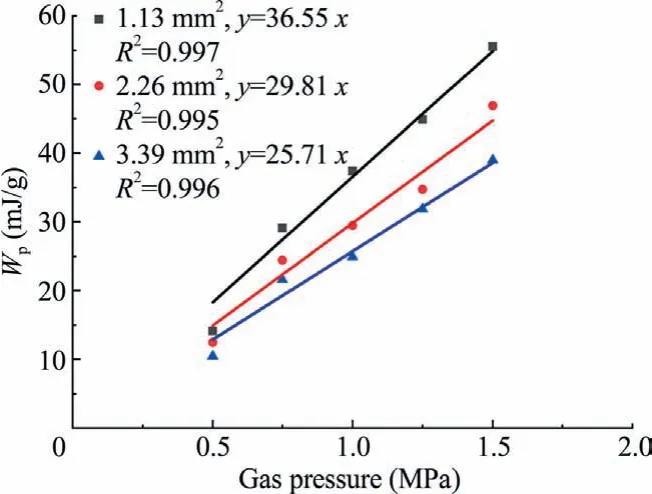
Fig.7.Relationship between gas pressure and IEERG under three nozzles.
Based on the adsorption and desorption characteristics of coal,the mechanism of particle size on IEERG mainly includes two aspects:(1) surface area of coal particle,and (2) passages for gas molecules in and out of coal matrix.Coal is a heterogeneous,porous medium composed of pore,fracture,and coal matrix.When coal sample becomes broken,its surface area and pore volume gradually increase [30-32].Some closed pores inside coal matrix turn into semi-open or open pores,and the pore structure simplifies in general.Since the adsorption and desorption behavior of gas mainly occurs at the gas-solid interface,the gas adsorption and desorption capacities get improved through the increase in surface area and IEERG rises as well[33].In addition,with a decrease in the particle size,paths for gas in and out of coal matrix become dense and short.From the perspective of work and energy transformation,the gas molecules have to overcome low resistance from the original adsorption site to the free space to be out of coal matrix,and more energy is used for own volume expansion,leading to an increase in IEERG.
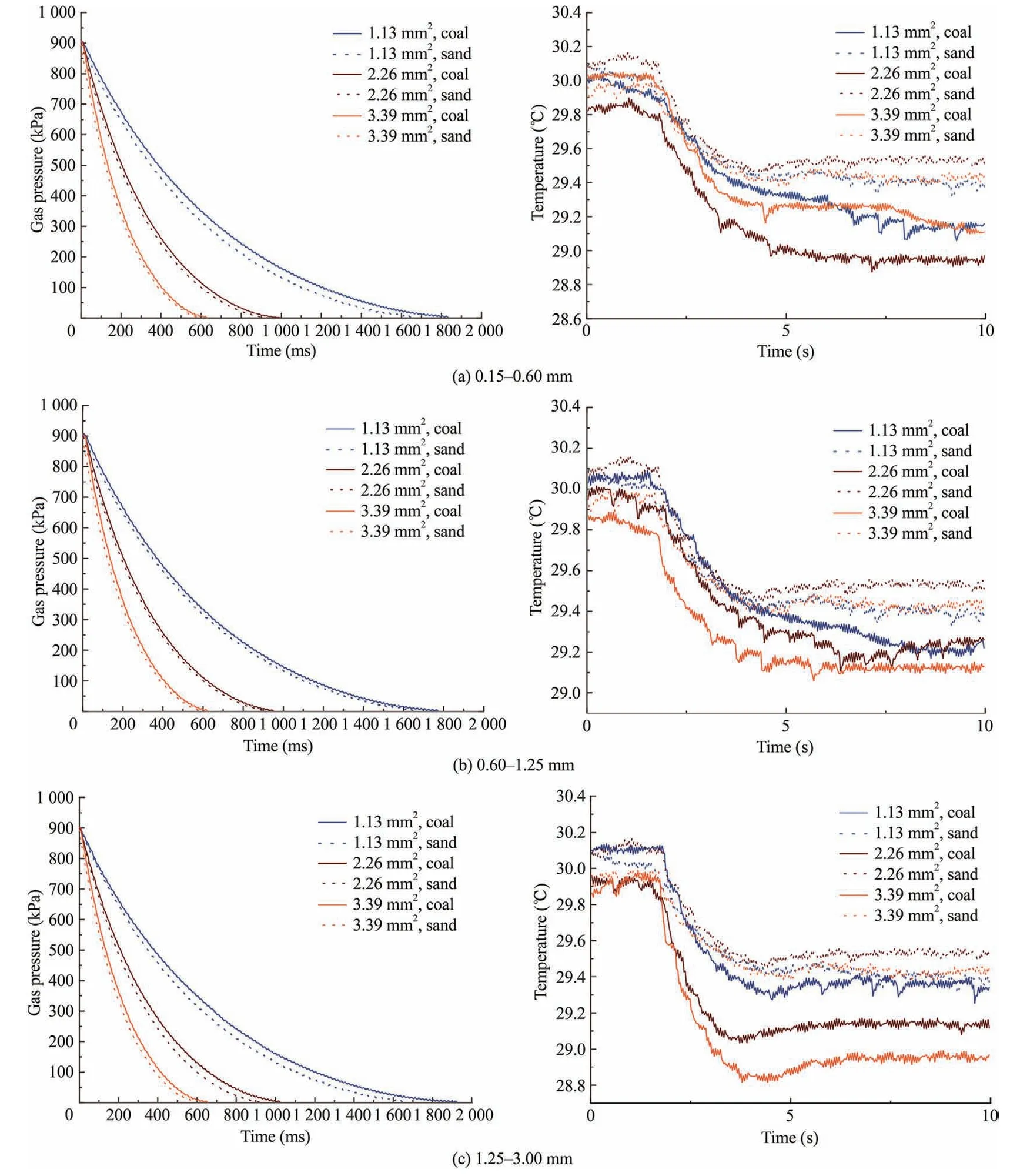
Fig.8.Pressure and temperature data of samples with different particle size under three nozzles.
However,the alteration on particle size does not cause an unrestricted change in the expansion energy.The critical value of particle size on IEERG in the variable control test is about 2.125 mm.Being bigger than the value,the absolute value of slope of curves gradually decreases and,eventually,tends to be stable.The reason for this phenomenon lies in that there is a critical particle size to affect the adsorption and desorption behaviors of coal.Particle size above the critical value has little effect on the gas desorption rate in the initial stages of gas release [34-36].
3.1.3.Effect of nozzle area on IEERG
A huge rate difference can also be found among the pressure curves under different nozzles in Fig.7.The smaller the nozzle area,the smaller the pressure drop rate.Moreover,the rate differences become even more notable with the increase of gas pressure.This is to say,larger amount of gas is emitted to remain a highpressure level for coal sample tested with a small nozzle,especially in high pressure state.As the nozzle area increases,IEERG of the same coal sample under the same gas pressure declines.The absolute value of slope of fitting curves decreases by approximate 15%when nozzle area increases from 1.13 to 2.26 and to 3.39 mm2.
In addition,the rates of fitting curves also vary markedly for different nozzles in Fig.9.Specifically,the absolute valves of relative coefficients including m,n and k decrease when the area rises.As the average particle size increases,the gap in IEERG under different nozzles gradually narrows and curves tend to be stable.The main reason accounting for this phenomenon is still attribute to the differences in pressure drop rate.The larger area of convergent nozzle,the shorter time for gas to dissipate.When the quick-release mechanism opens,smaller volume of desorbed gas flows out,providing less energy for outburst during expansion process.
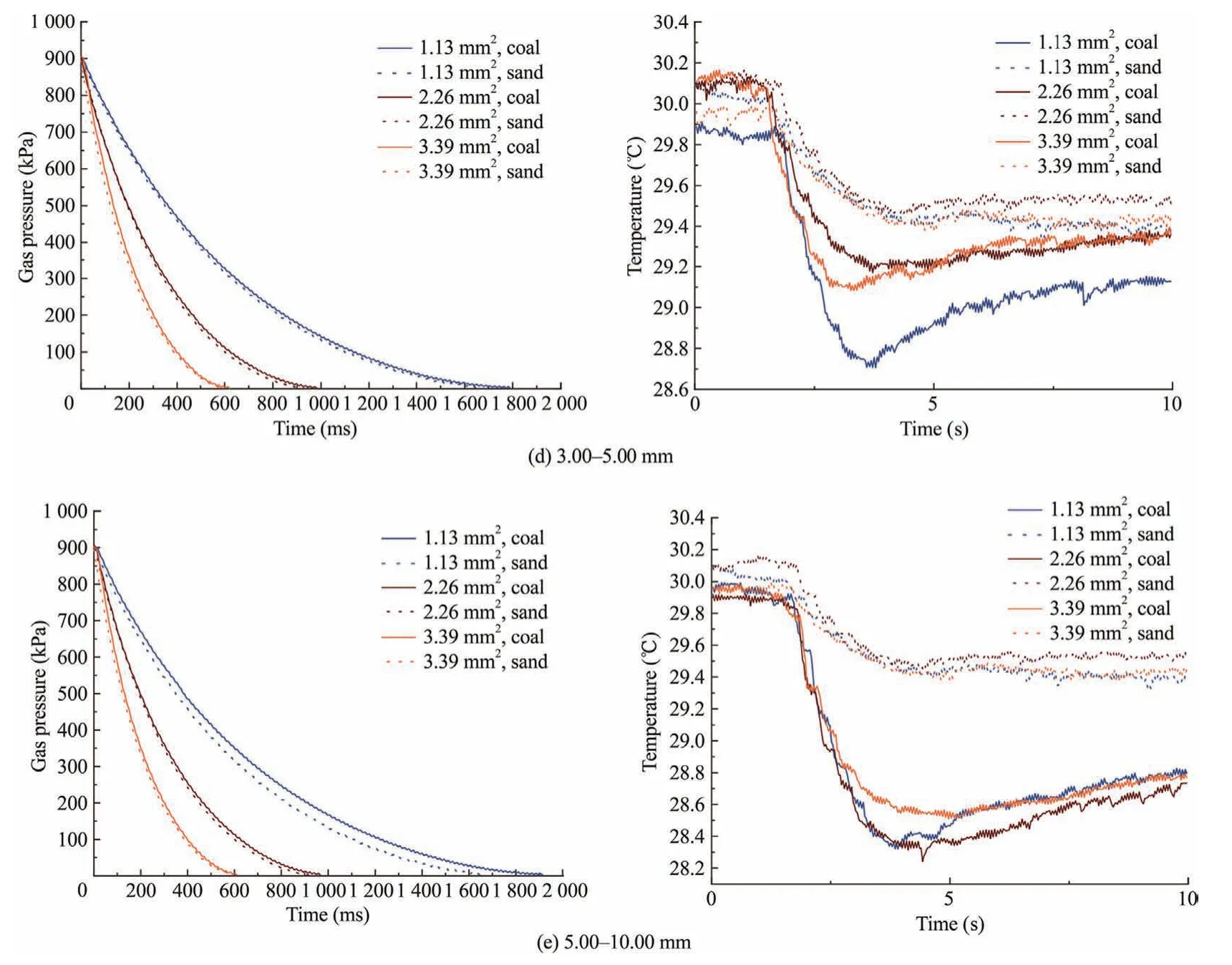
Fig.8(continued)

Fig.9.Relationship between particle size and IEERG under three nozzles.
To sum up,the effect of convergent nozzle on IEERG should be considered from desorption rate.After the quick-release mechanism opens,the duration that pressure changes from adsorptive equilibrium state to slow desorption state lasts for longer with a small nozzle than that with a large one.For example,the release process continues for approximate 2.1 s with nozzle area at 1.13 mm2and gas pressure at 1.5 MPa,but reduces to about 0.4 s with nozzle area at 3.39 mm2under the same gas pressure.The rules can be described as that the big nozzle provides shorter time for gas to desorb from coal matrix.Chen et al.also observed that the process of flow mass significantly changing shortens with nozzle diameter increasing from 1 to 3 mm [22].Moreover,after the treatment of increasing gas pressure or reducing the particle size to improve coal adsorption and desorption capacity,the time differences between different nozzles amplify.According to the‘‘coal and gas outburst crustal failure mechanism”,only expansion energy released by gas from initial emission stage to the coal throwed-out stage plays a key role during outburst [7-9].The following emitted gas expands in low pressure condition has little contribution to the promotion of outburst,and this gas expansion energy is not classified as IEERG.In the experiments,the increase of nozzle area results in reduction in the time of‘‘outburst”process where small amount of gas desorbs out of coal matrix with low expansion energy release.The weakening effect on IEERG was positive correlated with nozzle area,which is the reason for slope and value differences of fitting curves in Figs.7 and 9.
Generally,how to choose proper convergent nozzle and determine the reasonable threshold to indicate the risk of coal and gas outburst is becoming a key issue in the IEERG predictive method.At present,none of standards is set for experimental instrument in the research filed of IEERG.Even though some researchers have given the reference thresholds for weak and strong outburst risk,the value alteration caused by nozzle is an important problem that needs to be taken into consideration in the prediction of coal and gas outburst using the IEERG method.It is necessary to conduct a series of physical simulation tests of outburst.In this way,the IEERG distribution and critical values under different nozzles can be obtained,and the universal indicator references can be set,which would greatly improve the accuracy of outburst prediction.
3.2.Orthogonal experiment
3.2.1.Range analysis
The results of orthogonal experiment are shown in Table 5.
The range analysis method was applied for the discussion of experiment results.The index difference between highest level and lowest level for one factor is called the range,representing the degree of influence on test indicators (IEERG in this paper).The calculation formula is given by Eq.(8) and range parameters are listed in Table 6.

Table 5 Results of orthogonal experiment.

Table 6 Range parameters of different factors.

where i is the level;Kithe sum of IEERG in level i in mJ/g;r the repeat time for one level;the average value of IEERG in level i in mJ/g;and L the range.
In view of the extreme difference of factor’s influence,gas pressure has the greatest impact on IEERG,followed by nozzle area.
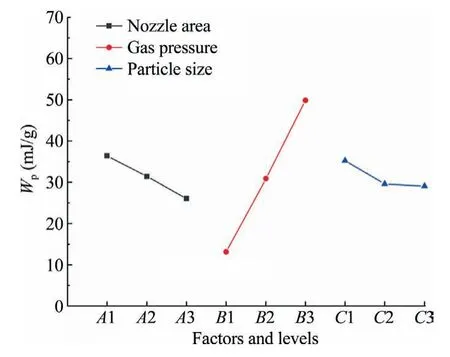
Fig.10.Influence of different factors on IEERG.
Whereas particle size has little effect on IEERG.Taking each level and factor as the abscissa and the average value of IEERG of each factor as the ordinate,the relation curves of IEERG and factors were established in Fig.10.Among these levels,A1,B3,and C1are the optimal levels of factors A,B,and C,respectively.The combination of the three levels is the optimal solution of orthogonal experiment,which means that IEERG of coal sample is the largest with the nozzle area at 1.13 mm2,gas pressure at 1.5 MPa and particle size ranging from 0.15 to 0.60 mm.
3.2.2.Variance analysis
Since the range analysis cannot distinguish the data fluctuation caused by the change of test conditions or test error,it is difficult to accurately estimate the significance of factors.Therefore,statistic index (F) is set for the variance analysis.

where j is the test number in orthogonal experiment;the IEERG of test number j in mJ/g;n the total test number;T the correction coefficient;SStthe total sum of squares of deviations;SSfthe sum of squares of deviations caused by factors;and SSethe sum of squares of deviations caused by error.

Table 7 Variance analysis parameters.

The free degrees are given by Eq.(10).where dftis the total free degree;dffthe free degree of factors;and dfethe free degree of error.
The variance analysis parameters are shown in Table 7.Because of FC<FA<F0.1(2,2) <FB,at the confidence level α=0.1,only gas pressure has significant effect on IEERG.The influence of gas pressure,nozzle area,and particle size decreases in turn.
It can be seen from Tables 6 and 7 that the range and variance parameters of gas pressure are both the largest among the three test factors,in other words,verifying that gas pressure is the main factor affecting IEERG.Compared with other factors in the orthogonal experiment,particle size has the lowest influencing degree.The influence of nozzle area on IEERG is determined which follows that of gas pressure.
4.Conclusions
The initial expansion energy of released gas is of great importance to the prediction and prevention of coal and gas outburst.Based on the improved experimental instrument,the variable control tests and orthogonal experiment are carried out,and the influence rule of gas pressure,particle size,and nozzle area on IEERG is investigated.
(1) The new experimental instrument for IEERG measurement is developed which adopts new devices and mechanisms for data acquisition and gas flow controlling,simplifying the test procedures and improving the accuracy of results.
(2) As the gas pressure increases,the IEERG of coal increases linearly.The effect of gas pressure on IEERG include the change on adsorption and desorption capacity of coal and damage on coal mechanical properties.
(3) As the particle size of coal sample increases,the IEERG decreases gradually,showing a negative exponential change relationship.The size distribution has an influence on the surface area of coal and the passenger for gas molecules emission,and finally affects IEERG.
(4) The larger the cross-sectional area of nozzle,the higher rate of gas release,and the lower value of IEERG.The absolute value of slope of gas pressure-IEERG curves and particle size-IEERG curves decreases when nozzle area rises.A series of simulation tests need to be done in the future to acquire precise critical values of different risk levels and improve the prediction of coal and gas outburst.
(5) The gas pressure is the main influencing factor of IEERG,followed by nozzle area and particle size in orderly.Only the influence of gas pressure on IEERG is remarkable.
Acknowledgements
This research is supported by the National Key Scientific Instruments and Equipment Development Projects of China (No.51427804) and the National Science Foundation of Shandong Province (No.ZR2017MEE023).The assistance from Dr.Bing Zhang and Dr.Tiantain Sun is acknowledged.
杂志排行
矿业科学技术学报的其它文章
- Evaluation of the use of sublevel open stoping in the mining of moderately dipping medium-thick orebodies
- Stability control of gob-side entry retained under the gob with close distance coal seams
- A novel coating technology for fast sealing of air leakage in underground coal mines
- A robust approach to identify roof bolts in 3D point cloud data captured from a mobile laser scanner
- Physical model test and numerical simulation on the failure mechanism of the roadway in layered soft rocks
- Deformation response of roof in solid backfilling coal mining based on viscoelastic properties of waste gangue
